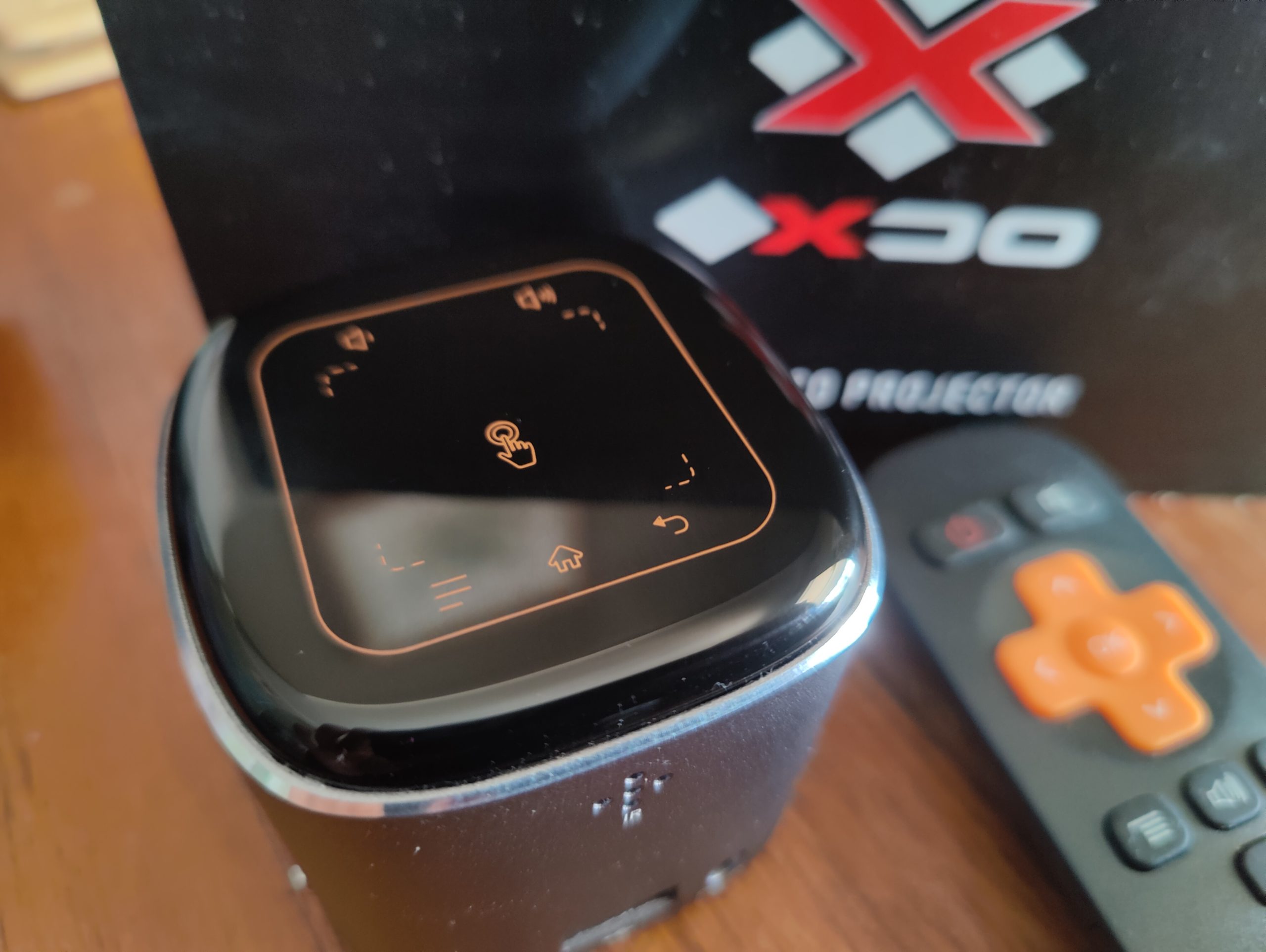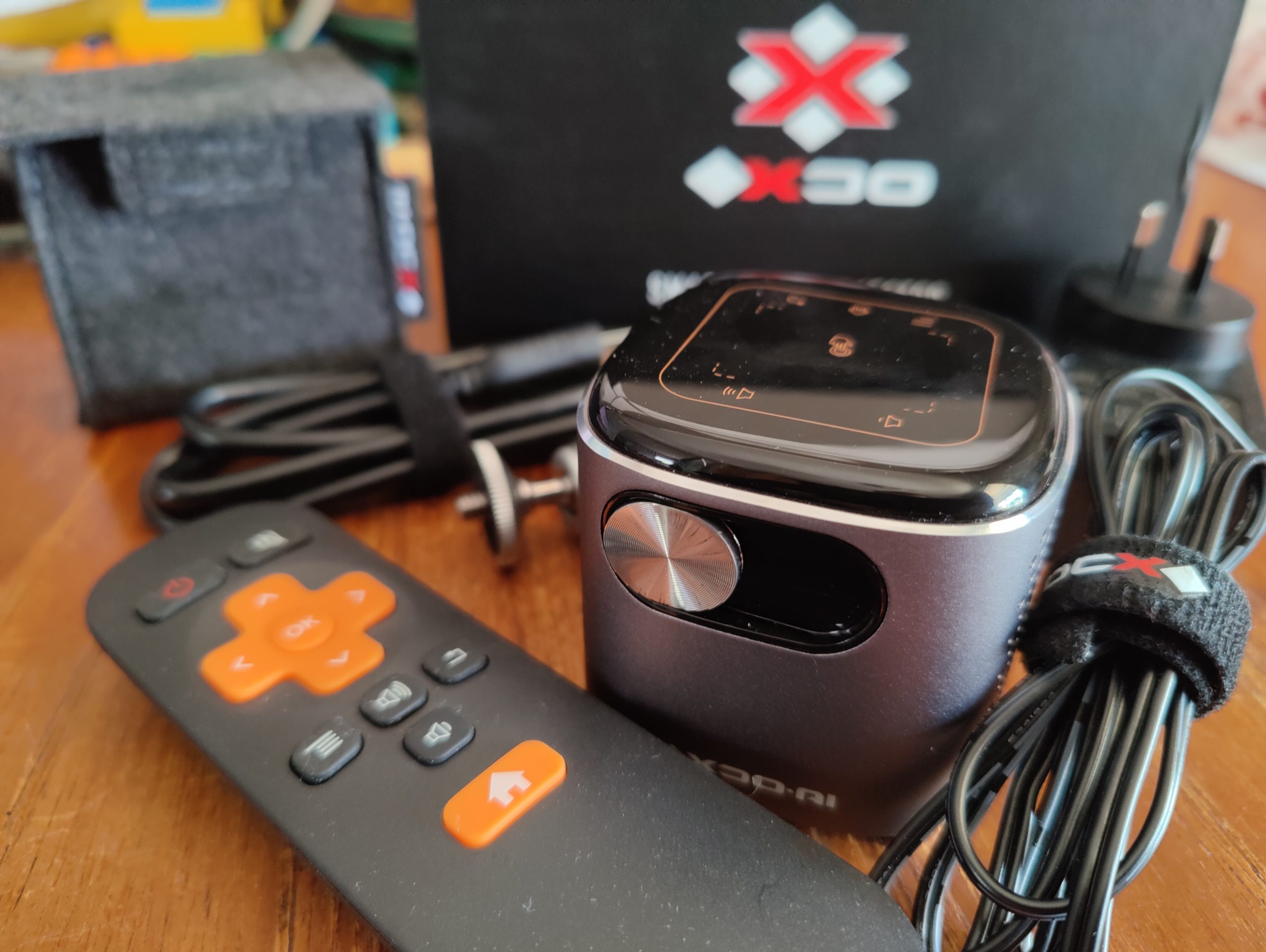As a general rule, we’re a bit wary of Kickstarters and Indiegogo campaigns. If you’ve not been caught out by one, you’re probably far too sensible and don’t buy stupid s**t on the crowdfunding platforms. That being said, this one actually feels quite different, ready for market and well put together.
The Pico Projector — part of a campaign that also includes a micro PC — came across our test bench and I’ll be honest: I was somewhat sceptical as to the daily use case for business users, let alone home users. In the first 48 hours of having it though, I was completely blown away by the functionality and versatility of the device. It quickly showed me that not only is there space for more display options in my life, but they’re also useful and a lot of fun.
What is it?
On the surface, it’s simply a tiny projector but there’s so much more to it than that. The XDO Pico Projector isn’t just a dumb video projector, it has Android built-in, connects to Wi-Fi and has a host of features as a result of that and to top it all off: It’s battery powered making it possibly the ultimate mobile presentation tool.
So that’s a lot to digest, so we’ll break it down a bit because there are functionality tools and some great fun to be had with this. Because I’m an overgrown child, we’ll start with the fun bits because it really is a great toy!
Controls, Connectivity, Productivity and fun
When it comes to controls for the projector there’s a number on the device, but also connectivity options. On the front of the projector, the lens is covered by a simple slider to protect it and ensure the long term viability of the device. On the left, a very small power button and min-HDMI connector. The rear has power input, a headphone jack and a USB-A port. On the right side is a focus roller that adjusts your focal length for different mounting or display options. Finally on top of the device you’ve got some typical “Android” touch controls such as home, back and menu, but also volume controls and the centre acts as a touchpad. It’s been well thought out however, I did find the touch controls pretty clumsy, particularly when scrolling but that might be user error.
This is largely offset by the simple and effective remote control. I say largely because while the remote does make navigation very easy, there’s a bit of a flaw in that, depending on the angle you’re working from – the remote doesn’t register with the projector. Now, this isn’t likely to cause too many problems for most users as the remote registers reliably from both sides and the rear of the device.
We’ve mentioned the fact it has Android built-in and that’s very cool because it means you can install almost any app of your choice. During testing, I’ve run Netflix, YouTube (both pre-installed) and Kayo Sports for countless hours. An unexpected joy of this was to project the picture onto the roof of my bedroom at night and watch sports or Netflix. If you’re going to do this, I’d recommend investing in a speaker that you can hook up to the projector, the sound is okay given the physical size of the projector but it’s not what I’d consider “good” sound. It was while I was streaming video that I discovered that the battery lasts — quite consistently — just shy of two hours when you’re using the Wi-Fi.
Out of curiosity, I even tried Google’s productivity apps on it. This was made possible because of the USB port on the back of the device that allows you to run a keyboard and mouse to control the screen. I’m genuinely impressed at how well this handled pretty much anything I threw at it to display.
How does it perform on a daily basis?
Testing a projector is something very new for me, so I had to think about the areas that really worked, just worked and the areas that really didn’t work. For the most part, this is just a really solid device. If I’m honest, far better than I expected of a device that’s just getting going on an Indiegogo campaign. The presentation and solid feel alone show that this is a device that’s been well thought out and engineered.
When it comes to daily use, there are a couple of limitations that I came across. The Android version is a bit old and, in reality, you may not see an update although they do note that over the air (OTA) updates are possible. We queried this with the manufacturer and were told that the chances of an update are hinged purely on sales: If it sells well, a new interface and update is likely.
If you’re going to mirror your device screen to the projector, while it works, the mirroring isn’t something I’d rely on in a big scale corporate presentation. I had a couple of issues with the mirror feature — from Android and Mac devices — freezing and crashing. To their credit, XDO were very receptive to this feedback and noted that stability updates will be pushed out with firmware updates. This is a good time to again mention; We’re testing a prototype, not the final version for retail distribution.
The other limitation — perhaps, personal desire/preference — would be to have a USB-C interface for video out from a wider range of devices.
From a presentation, or “PC connected” perspective this is exactly what you’d expect. Once you plug in the projector to your PC or laptop, you’ve got an extra output that you can use for display. This means you’ve got the extra screen that you can use for your Powerpoint presentations, to mirror your screen or to play a variety of media for your friends and family. If you’re using a direct connection, rather than the Wi-Fi to stream and process video the battery will last about two and a half hours which is a pretty solid result for something this physical size.
This is, quite sincerely, one of the most versatile and useful gadgets that I’ve had come across the test bench in quite some time while working for Ausdroid. During the testing period, I’ve had the chance to give it a good run and I am very impressed.
Should you buy one?
The projector cost starts at US$179 with a few variables (check the Indiegogo page for full details) which makes it around AU$244.00, plus shipping at the time of writing this. That’s really reasonable for what you’re getting, particularly accounting for the versatility of the device.
The fact that XDO has a range of accessories for the projector (and Pico PC) including a carry case, keyboard options and a power pack – making it not just small and light, but a genuinely portable option. When you consider that it’s also something with the ability to cross over from work, to play and entertainment across your family that’s actually quite the bargain. Since the review unit landed on the test bench, it’s been getting used progressively more and more. So while it would be nice if it were a touch more versatile with USB-C connectivity and future proof with guaranteed updates – it’s a great looking device that has outstanding features and absolutely worth the money.















What screen resolution is this projector. It sounds very intriguing.
It’s WVGA which (I’m pretty sure) works out to 854*480
Thanks Phil.
That’s a really low resolution by present day standards. It’s only slightly better than the resolution of the first Android tablet I bought back in September 2011, the Telstra T-Touch Tab (800×480).
I hope they can advance the design enough to make 720p HD viable.